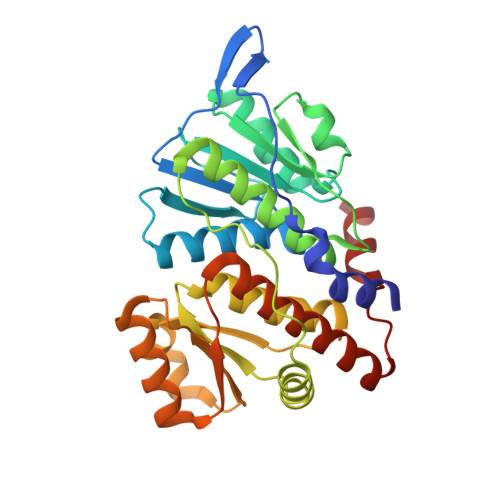Structural basis for phosphomannose isomerase activity in phosphoglucose isomerase from Pyrobaculum aerophilum: a subtle difference between distantly related enzymes.
Swan, M.K., Hansen, T., Schoenheit, P., Davies, C.(2004) Biochemistry 43: 14088-14095
- PubMed: 15518558
- DOI: https://doi.org/10.1021/bi048608y
- Primary Citation of Related Structures:
1X9H, 1X9I - PubMed Abstract:
The crystal structure of a dual-specificity phosphoglucose/phosphomannose isomerase from the crenarchaeon Pyrobaculum aerophilum (PaPGI/PMI) has been determined in complex with glucose 6-phosphate at 1.16 A resolution and with fructose 6-phosphate at 1.5 A resolution. Subsequent modeling of mannose 6-phosphate (M6P) into the active site of the enzyme shows that the PMI activity of this enzyme may be due to the additional space imparted by a threonine. In PGIs from bacterial and eukaryotic sources, which cannot use M6P as a substrate, the equivalent residue is a glutamine. The increased space may permit rotation of the C2-C3 bond in M6P to facilitate abstraction of a proton from C2 by Glu203 and, after a further C2-C3 rotation of the resulting cis-enediolate, re-donation of a proton to C1 by the same residue. A proline residue (in place of a glycine in PGI) may also promote PMI activity by positioning the C1-O1 region of M6P. Thus, the PMI reaction in PaPGI/PMI probably uses a cis-enediol mechanism of catalysis, and this activity appears to arise from a subtle difference in the architecture of the enzyme, compared to bacterial and eukaryotic PGIs.
Organizational Affiliation:
Department of Biochemistry and Molecular Biology, Medical University of South Carolina, Charleston, South Carolina 29425, USA.
















